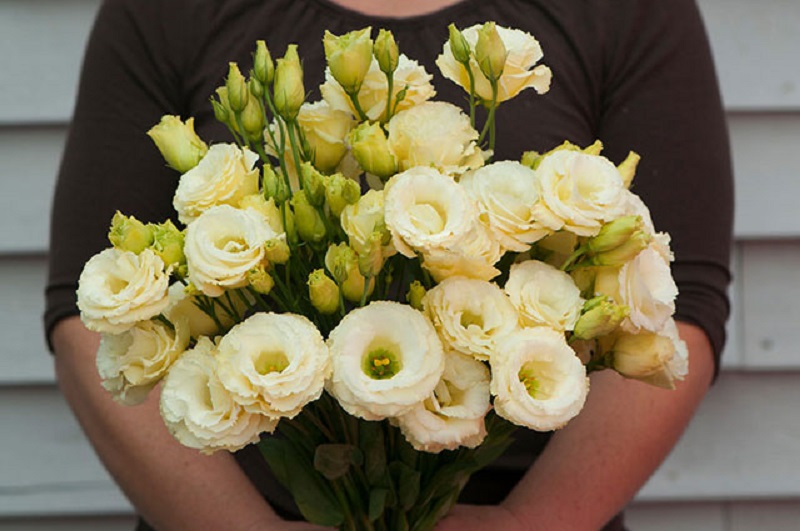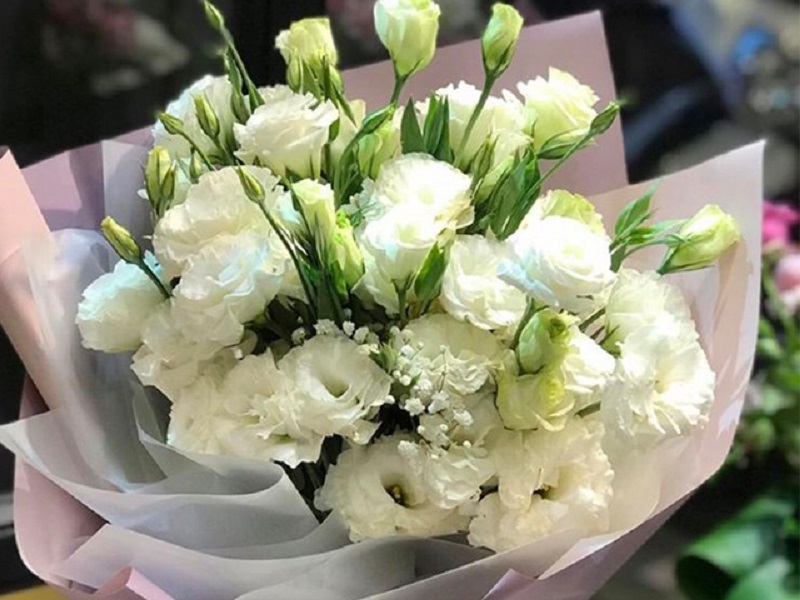White Lisianthus, scientifically known as Eustoma grandiflorum, is renowned for its delicate and sophisticated beauty. This flower is a favorite among gardeners and florists alike, prized for its soft, ruffled petals and versatile uses. This guide explores the botanical characteristics, care requirements, uses, and symbolism of white Lisianthus, providing a detailed overview for enthusiasts and professionals.
Botanical Description of White Lisianthus
Scientific Classification
White Lisianthus belongs to the genus Eustoma and the species Eustoma grandiflorum. It is part of the Gentianaceae family, known for its vibrant and ornamental flowers.
Physical Characteristics
White Lisianthus features elegant, ruffled petals with a soft, white hue. The flower’s appearance is often compared to roses due to its layered structure. The plant’s foliage includes lance-shaped, green leaves and sturdy, upright stems that support the large, funnel-shaped blooms.

Growth Cycle
From seed germination to flowering, white Lisianthus undergoes a distinct growth cycle. Germination occurs in 2-3 weeks, with the plant reaching full bloom in mid-summer. Post-bloom, the plant enters a dormant phase before the next growing season.
Cultivation and Care for White Lisianthus
Soil and Planting Conditions
White Lisianthus thrives in well-draining soil with a slightly acidic to neutral pH, ideally between 6.0 and 7.0. It prefers full sun to partial shade, with at least six hours of direct sunlight per day. For best results, plant in loamy soil mixed with organic matter.
Watering and Fertilization
Regular watering is essential, but avoid overwatering to prevent root rot. Maintain consistently moist soil without waterlogging. Fertilize with a balanced, water-soluble fertilizer every four to six weeks, and consider a high-phosphorus fertilizer to enhance blooming.
Pest and Disease Management
Monitor for pests such as aphids, spider mites, and thrips. Use appropriate insecticides to manage these issues. Prevent diseases like powdery mildew by ensuring good air circulation and avoiding overhead watering.
Harvesting and Post-Harvest Care
Harvest white Lisianthus when buds show color but are not fully open. Cut stems early in the morning and place them in water immediately. Extend vase life by changing the water every few days and using flower preservatives.
Uses and Symbolism of White Lisianthus
Decorative Uses
White Lisianthus is highly valued in floral arrangements for its elegance and long vase life. It is commonly used in weddings, centerpieces, and garden plantings, adding a touch of sophistication to various settings.
Symbolic Meanings
White Lisianthus symbolizes purity, innocence, and new beginnings. Its pristine appearance makes it a popular choice for weddings and other celebrations of love and elegance.
Popularity in Different Cultures
Globally, white Lisianthus is appreciated for its beauty and versatility. In Western countries, it is a staple in floral designs, while in Asian cultures, it is valued for its subtle elegance and is often used in traditional arrangements.

Varieties and Hybrids of White Lisianthus
Common Varieties
White Lisianthus comes in several varieties and hybrids, each offering unique features such as different petal shapes, bloom sizes, and subtle color variations. These variations allow for customization in floral designs.
Breeding and Development
Advancements in breeding have led to new Lisianthus varieties with improved traits such as disease resistance and enhanced blooming characteristics. Breeders continue to innovate, expanding the range of options available to gardeners and florists.
Troubleshooting and FAQs
Common Issues
Gardeners may encounter issues such as stunted growth or poor blooming. Ensuring optimal conditions, such as proper soil drainage and adequate light, can address many of these problems. Consult local gardening experts for persistent issues.
Frequently Asked Questions
- How to propagate Lisianthus? Lisianthus can be propagated from seeds or cuttings. Start seeds indoors several months before the last frost or take summer cuttings from healthy plants.
- What is the difference between Lisianthus and similar flowers? Lisianthus is often compared to roses and peonies. Differences include growth habits, blooming periods, and foliage characteristics, making each flower unique.
White Lisianthus is a flower of exceptional elegance and versatility, perfect for a range of decorative and symbolic uses. Understanding its botanical traits, cultivation needs, and cultural significance enhances appreciation and effective use of this exquisite bloom. As breeding techniques evolve, the white Lisianthus continues to captivate with its timeless beauty.
